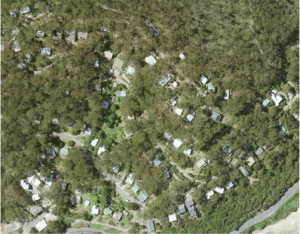

Climate Experience:
Bushfires have caused huge damage to the area.
Explanation:
- Increasing temperatures and less rainfall have lead to greater forest fire danger.[1]
- Victoria has become substantially drier.[2]
- 2000-19 has seen 67% more total fire bans across Victoria compared to the preceding two decades.[3]
- The number of dangerous bushfire days is increasing, along with the intensity of fires.[4]
- The region has had 22 consecutive years above average temperatures.[5]
- The region has seen 14 out of the last 16 years below average rainfall.[6]
Ramifications:
- Inaction will see an increase in severe fire days in southern and eastern Australia by up to 160-190% by 2090.[7]
- Economic costs of bushfires in Victoria is an estimated $180 million/year, this is predicted to double by 2050.[8]
- Increase in fires will mean more fatalities, but also an increase in adverse health affects caused by smoke, this can include cardiac arrests and increased inhalation of cancer causing chemicals; the elderly are most vulnerable.[9]
- Increased fires will also mean an increase in people who suffer from post-traumatic stress, anxiety, depression and grief among other mental health problems.[10]
What can be done?
- Email your local MP and tell them that action on climate is important to you and explain the impacts being felt in your area. One email might not feel like much but most politicians consider it to be representative of 100 citizens.
- Help support the Act on Climate collective by donating; we are leading the charge for climate action. Your donation helps in advancing policies that prevent climate change from getting worse, we aim to empower communities and build a strong pro-climate-action constituency that governments can’t ignore, and as an added bonus it’s tax-deductable.
- Get involved with Act on Climate. We meet every Monday at 6pm (upstairs at 312 Smith St, Collingwood) and welcome all newcomers to join in the fight for climate justice. If you are unable to attend, follow us on Facebook, Twitter and Instagram to keep up with the latest campaign.
* We aim to keep our material as accurate and as relevant as possible. Working with climate science, a field that is being constantly updated, keeps us on our toes. Information on this site was gathered on June 1 2019; if you notice information that needs updating please let us know. For the full reference list please see the following.
__________________________________
[1]CSIRO, “State of the Climate.”5.
[2]Chris Pedler, “CFA maps show central Victoria is significantly drier than last year,” Bendigo Advertiser, published Octorber 23, 2018, https://www.bendigoadvertiser.com.au/story/5717049/cfa-heatmaps-show-how-dry-central-victoria-is-compared-to-last-year/
[3]“History of TFBs,” CFA, accessed April 29, 2019, https://www.cfa.vic.gov.au/warnings-restrictions/history-of-tfbs
[4]CSIRO, “State of the Climate.”5.
[5]“Australian Climate Change Site Data – Cape Otway Lighthouse”, Bureau of Meteorology, access April 23 2019, http://www.bom.gov.au/cgi-bin/climate/hqsites/site_data.cgi?variable=maxT&area=aus&station=090015&dtype=anom&period=annual&ave_yr=0
[6]“Australian Climate Change Site Data – Lovely Banks Reservoir”, Bureau of Meteorology, access April 23 2019, http://www.bom.gov.au/cgi-bin/climate/hqsites/site_data.cgi?variable=rain&area=aus&station=087034&dtype=anom&period=annual&ave_yr=0
[7]Council, “Climate Change and the Victoria Bushfire Threat: Update 2017.”15.
[10]Whittaker, Handmer, and Mercer, “Vulnerability to Bushfires in Rural Australia: A Case Study from East Gippsland, Victoria.”168.
